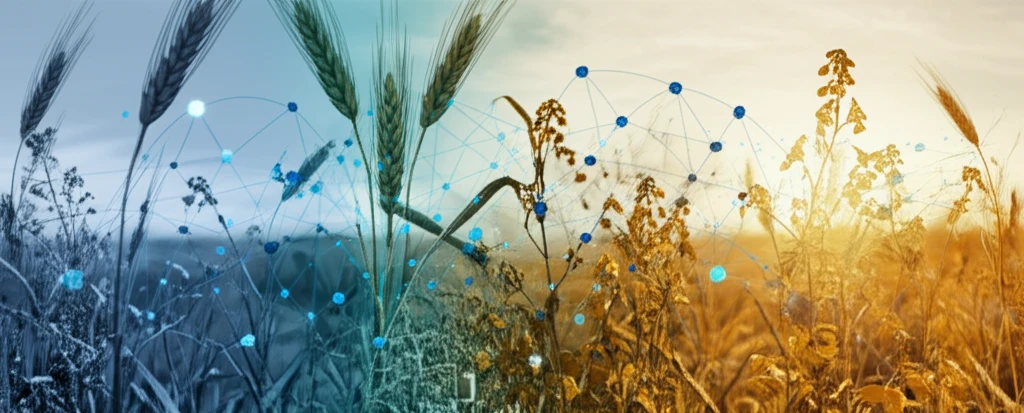
Decoding Market Trends: What the Grains and Oilseeds Index Reveals About Food Prices
"Uncover the hidden patterns in grain and oilseed prices using network analysis, revealing critical insights for consumers and investors alike."
Food prices are a cornerstone of global stability, impacting everything from national security to social order. When food costs surge, the repercussions can include inflation, famine, and widespread social unrest. This makes understanding and predicting food price fluctuations not just an economic concern but a critical imperative for maintaining global stability.
Enter the Grains and Oilseeds Index (GOI), a key barometer of global agricultural markets. This index, along with its five sub-indices covering wheat, maize, soybeans, rice, and barley, provides daily price indicators reflecting changes in the spot markets of staple agro-food crops. By analyzing these indices, we gain valuable insights into the complex dynamics influencing our food supply.
Traditional methods of analyzing time-series data often fall short when trying to capture nonlinear associations and long-range dependencies. That's where the transformative potential of mapping time series onto complex networks comes into play. Using a technique called visibility graph (VG) analysis, we can convert these indices into networks, allowing us to harness the power of network science to dissect the multifaceted complexity of temporal data and potentially predict future trends.
Visibility Graphs: A New Lens for Understanding Food Prices

The study "Visibility graph analysis of the grains and oilseeds indices," employs visibility graph (VG) analysis to transform the Grains and Oilseeds Index (GOI) and its sub-indices into complex networks. This approach reveals underlying patterns and dependencies in food price data that might be missed by traditional analytical methods. Here's a simplified breakdown of how this works and what it uncovers:
- Node Creation: Each data point in the time series becomes a node in the network.
- Edge Connection: Two nodes are connected if a straight line can be drawn between their corresponding data points without being blocked by any intervening data points.
- Network Analysis: Once the network is constructed, various metrics like degree distribution, clustering coefficient, and average path length are calculated to understand the network's structure.
The Future of Food Price Analysis
The research highlights the potential of using network science to understand and predict commodity price dynamics. By identifying trends, structures, and properties within visibility graphs, new avenues open for understanding market behaviors. The study suggests further research is needed, including extended time series analysis, comparative studies with other financial instruments, and detailed investigations into the mechanisms driving network properties. Incorporating external factors such as geopolitical events, climate change impacts, and economic indicators could provide a more holistic view of commodity markets.
